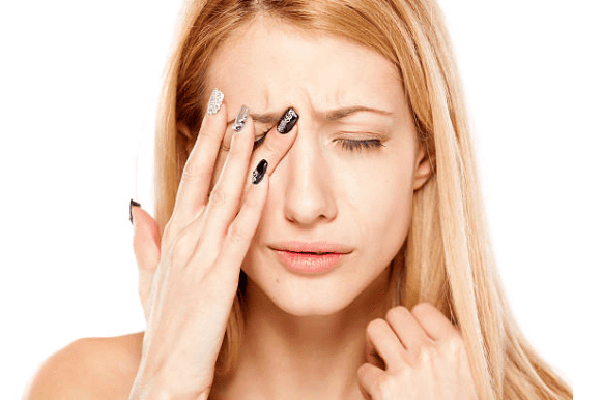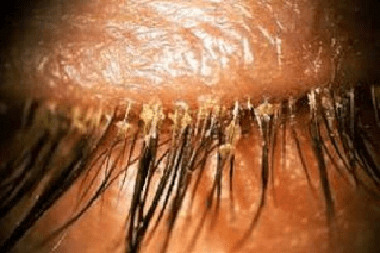Ophthalmology >>>> Blepharitis and methods of its treatment
Blepharitis and methods of its treatment.

Causes of blepharitis.
Blepharitis is an inflammatory process that affects the edge of the eyelid. Due to the different localization of the inflammatory process, blepharitis is distinguished, affecting only the ciliary part of the eyelid (anterior marginal blepharitis), affecting the outlet ducts of the meibomian glands (posterior marginal blepharitis), located on the eyelid in the corners of the eye (angular blepharitis).
The causes of blepharitis are based on a number of factors:
- Infectious agents that fall on the edge of the eyelid as a result of rubbing the eyes with hands (bacteria and viruses),
- Parasites living in the lumens of the sebaceous glands, in hair follicles (including ciliary ones) - demodex mite,
- Allergens that cause generalized allergic reactions and affect the conjunctiva and the edge of the eyelid (medicines, plant pollen, dust mites, cosmetics),
- Skin diseases that spread both to the surface of the eyelid and to its edge (seborrhea, rosacea, psoriasis),
- Increased production of the secretion of the meibomian glands when it is impossible to completely eliminate it,
- Dustiness of the environment, leading to the deposition of dust particles on the eyelashes and edges of the eyelid, causing mechanical irritation and inflammation of the edges of the eyelid,
- Vapors of chemical reagents that settle on the eyelids and cause processes of chemical irritation of the edges of the eyelid.


For the blepharitis is characterized by chronicity of inflammation, recurrent relapses, it is difficult to treat.
It is easy to diagnose this disease, since the external signs of blepharitis are visible to the naked eye:
- Hyperemia (redness) of the edge of the eyelid,
- Swelling of the edge of the eyelid,
- Crusts located at the edge of the eyelid and in between the eyelashes,
- Purulent or bleeding ulcers (with ulcerative blepharitis),
- Erythema and scales along the edge of the eyelid (with demodectic blepharitis).
The most common signs of blepharitis are:
- Burning around the edge of the eyelid,
- Itching around the edges of the eyelids and eyelashes,
- Increased lacrimation,
- The gore in the eyes,
- In some cases, eyelash loss and a change in the direction of their growth,
- The development of photophobia is possible,
- Purulent discharge provokes sticking of the eyelids and eyelashes,
- The eyes are constantly inflamed and painful.
Treatment of blepharitis and prevention of relapse.
Treatment for blepharitis includes drug therapy and proper eyelid care.
Until the moment drug therapy is applied, the eyelids need to be prepared:
- clean from crusts and mucus with a cotton swab dipped in water or furacilin,
- if the crusts are dry, you must first soak the edges of the eyelids in warm water using a compress,
- Do not wipe the eyelid with the same sponge, change it after each passage through the eyelid and do not use for both eyes.
Treatment of blepharitis is carried out by applying eye ointments to the edges of the eyelid using a glass rod or clean fingers and instilling eye drops if necessary.
In case of infectious blepharitis: Maxitrol ointment and eye drops with an antibiotic (Tsipromed and others) or an antiviral drug (Oftalmoferon and others), respectively, of the identified infection.
For allergic blepharitis: elimination of the allergen, hydrocortisone ointment, Alomid drops, Lekrolin, Dexamethasone.
For ulcerative blepharitis: Erythromycin ointment, Tetraceclin ointment, Tobrex ointment or drops.
With demodectic blepharitis: Metrogyl-gel for the eyes on the edges of the eyelids, Metronidazole tablets inside, Zinc paste.
When treating blepharitis, they do not use cosmetics; they wash and wipe the eyes with a solution of Furacilin several times a day. The course of treatment with antibiotic ointments and drops is carried out according to the instructions and prescription of the doctor.
To prevent relapses of blepharitis, protective glasses are worn in dusty rooms, hypoallergenic cosmetics and eye care products are chosen, the eyes are regularly washed with strong tea leaves, a weak solution of Furacilin.

Read

Read



























